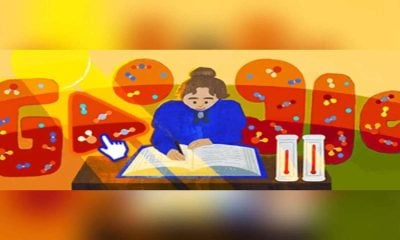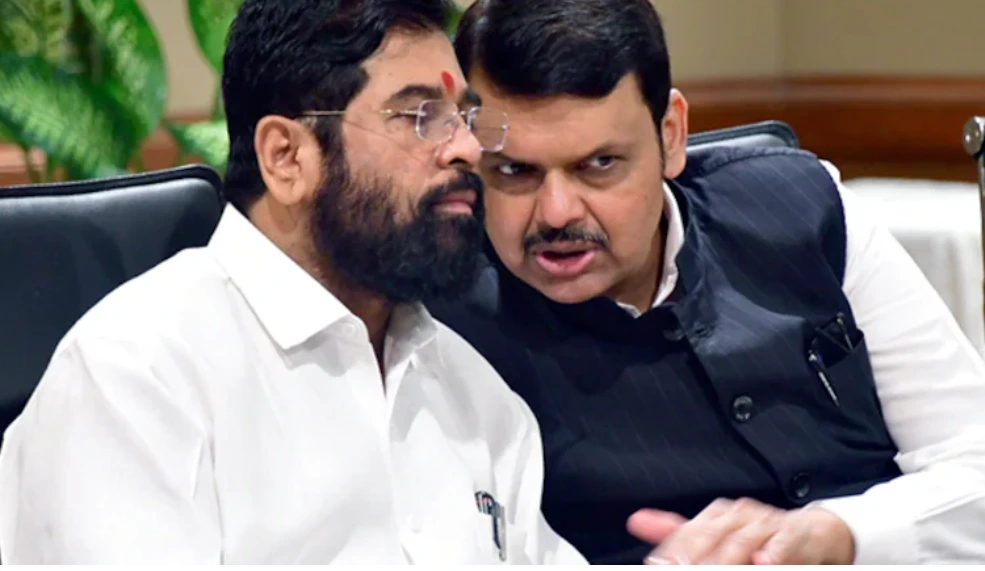[vc_row][vc_column][vc_column_text]Years ago, Stephen Hawking, asked about the death and if he feared it, said: “I have lived with the prospect of an early death for the last 49 years. I’m not afraid of death, but I’m in no hurry to die. I have so much I want to do first. I regard the brain as a computer which will stop working when its components fail. There is no heaven or afterlife for broken down computers; that is a fairy story for people afraid of the dark.”
That ‘computer’ stopped working on Wednesday, March 14, its failing ‘components’ giving in to the unrelenting laws of science after keeping the scientist going till the age of 76, although he had contracted a fatal neurone disease at the age of 21 and wasn’t expected to live long. Doctors had expected him to live for only two more years, but Hawking survived for more than half a century.
He won the Albert Einstein Award, the Wolf Prize, the Copley Medal, and the Fundamental Physics Prize. The Nobel prize, however, eluded him.
Hawking’s children, Lucy, Robert and Tim, said in a statement: “We are deeply saddened that our beloved father passed away today. He was a great scientist and an extraordinary man whose work and legacy will live on for many years. His courage and persistence with his brilliance and humour inspired people across the world.
“He once said: ‘It would not be much of a universe if it wasn’t home to the people you love.’ We will miss him for ever.”
The ailment Amyotrophic Lateral Sclerosis (ALS) that paralysed him gradually spurred him to work harder but also contributed to the collapse of his two marriages, he wrote in a 2013 memoir “My Brief History”. In the book he related how he was first diagnosed: “I felt it was very unfair – why should this happen to me,” he wrote. “At the time, I thought my life was over and that I would never realise the potential I felt I had. But now, 50 years later, I can be quietly satisfied with my life.”
Hawking’s work ranged from the origins of the universe itself, through the tantalising prospect of time travel to the mysteries of space’s all-consuming black holes. Hawking’s first major breakthrough came in 1970, when he and Roger Penrose applied the mathematics of black holes to the universe and showed that a singularity, a region of infinite curvature in spacetime, lay in our distant past: the point from which came the big bang.
He also came up with the theory of cosmic inflation which says that the early universe went through a period of enormous. Hawking was among the first to show how quantum fluctuations – tiny variations in the distribution of matter – might give rise through inflation to the spread of galaxies in the universe. In these tiny ripples lay the seeds of stars, planets and life as we know it, said The Guardian.
Stephen Hawking wrote lucidly on the mysteries of space, time and black holes. His book, “A Brief History of Time”, published in 1988, became an international best seller, making him one of science’s biggest celebrities since Albert Einstein. One of the most complex books ever to achieve mass appeal, it stayed on the Sunday Times best-sellers list for no fewer than 237 weeks. It sold 10m copies and was translated into 40 different languages.
He followed up “A Brief History of Time” in 2001 with a sequel “The Universe in a Nutshell”, updating readers on concepts like super gravity, naked singularities and the possibility of an 11-dimensional universe.
As one of Isaac Newton’s successors as Lucasian Professor of Mathematics at Cambridge University, Hawking was involved in the search for the great goal of physics – “a unified theory” that would resolve the contradictions between Einstein’s General Theory of Relativity, which describes the laws of gravity that govern the motion of large objects like planets, and the Theory of Quantum Mechanics, which deals with the world of subatomic particles.
He said finding a “theory of everything” would allow mankind to “know the mind of God.”
“A complete, consistent unified theory is only the first step: our goal is a complete understanding of the events around us, and of our own existence,” he wrote in “A Brief History of Time.”
He had said: “My goal is simple. It is a complete understanding of the universe, why it is as it is and why it exists at all.” In later years, though, he suggested a unified theory might not exist.
Hawking, reported The Guardian, was fond of scientific wagers – despite a knack for losing them. In 1975, he bet the US physicist Kip Thorne a subscription to Penthouse that the cosmic x-ray source Cygnus X-1 was not a black hole. He lost in 1990. In 1997, Hawking and Thorne bet John Preskill an encyclopaedia that information must be lost in black holes. Hawking conceded in 2004. In 2012, Hawking lost $100 to Gordon Kane for betting that the Higgs boson would not be discovered.
Hawking argued that humanity would have to spread out into space to survive, and warned against the potentially immense dangers of artificial intelligence, including autonomous weapons.
Hawking made cameo television appearances in “The Simpsons” and “Star Trek: The Next Generation” and his fans included U2 guitarist The Edge, who attended a January 2002 celebration of Hawking’s 60th birthday. The 2014 film “The Theory of Everything” was based on his life, with Eddie Redmayne winning the best actor Academy Award for his portrayal of the scientist. The film focused still more attention on Hawking’s remarkable achievements.
Some of his most outspoken comments offended the religious. In his 2010 book, Grand Design, he declared that God was not needed to set the universe going, and in an interview with the Guardian a year later, dismissed the comforts of religious belief.
Hawking said belief in a God who intervenes in the universe “to make sure the good guys win or get rewarded in the next life” was wishful thinking.
An atheist to boot, he once famously said: “One can’t prove that God doesn’t exist, but science makes God unnecessary.”
As mentioned in the beginning, he was no believer in any afterlife either. The belief that heaven or an afterlife awaits us is a “fairy story” for people afraid of death, he held.[/vc_column_text][vc_raw_html]JTNDYmxvY2txdW90ZSUyMGNsYXNzJTNEJTIydHdpdHRlci10d2VldCUyMiUyMGRhdGEtbGFuZyUzRCUyMmVuJTIyJTNFJTNDcCUyMGxhbmclM0QlMjJlbiUyMiUyMGRpciUzRCUyMmx0ciUyMiUzRVJlbWVtYmVyaW5nJTIwU3RlcGhlbiUyMEhhd2tpbmclMkMlMjBhJTIwcmVub3duZWQlMjBwaHlzaWNpc3QlMjBhbmQlMjBhbWJhc3NhZG9yJTIwb2YlMjBzY2llbmNlLiUyMEhpcyUyMHRoZW9yaWVzJTIwdW5sb2NrZWQlMjBhJTIwdW5pdmVyc2UlMjBvZiUyMHBvc3NpYmlsaXRpZXMlMjB0aGF0JTIwd2UlMjAlMjZhbXAlM0IlMjB0aGUlMjB3b3JsZCUyMGFyZSUyMGV4cGxvcmluZy4lMjBNYXklMjB5b3UlMjBrZWVwJTIwZmx5aW5nJTIwbGlrZSUyMHN1cGVybWFuJTIwaW4lMjBtaWNyb2dyYXZpdHklMkMlMjBhcyUyMHlvdSUyMHNhaWQlMjB0byUyMGFzdHJvbmF1dHMlMjBvbiUyMCUzQ2ElMjBocmVmJTNEJTIyaHR0cHMlM0ElMkYlMkZ0d2l0dGVyLmNvbSUyRlNwYWNlX1N0YXRpb24lM0ZyZWZfc3JjJTNEdHdzcmMlMjU1RXRmdyUyMiUzRSU0MFNwYWNlX1N0YXRpb24lM0MlMkZhJTNFJTIwaW4lMjAyMDE0JTIwJTNDYSUyMGhyZWYlM0QlMjJodHRwcyUzQSUyRiUyRnQuY28lMkZGZVI0ZmQyelo1JTIyJTNFcGljLnR3aXR0ZXIuY29tJTJGRmVSNGZkMnpaNSUzQyUyRmElM0UlM0MlMkZwJTNFJTI2bWRhc2glM0IlMjBOQVNBJTIwJTI4JTQwTkFTQSUyOSUyMCUzQ2ElMjBocmVmJTNEJTIyaHR0cHMlM0ElMkYlMkZ0d2l0dGVyLmNvbSUyRk5BU0ElMkZzdGF0dXMlMkY5NzM3ODczOTI1OTAxNzIxNjAlM0ZyZWZfc3JjJTNEdHdzcmMlMjU1RXRmdyUyMiUzRU1hcmNoJTIwMTQlMkMlMjAyMDE4JTNDJTJGYSUzRSUzQyUyRmJsb2NrcXVvdGUlM0UlMEElM0NzY3JpcHQlMjBhc3luYyUyMHNyYyUzRCUyMmh0dHBzJTNBJTJGJTJGcGxhdGZvcm0udHdpdHRlci5jb20lMkZ3aWRnZXRzLmpzJTIyJTIwY2hhcnNldCUzRCUyMnV0Zi04JTIyJTNFJTNDJTJGc2NyaXB0JTNFJTBB[/vc_raw_html][/vc_column][/vc_row]


 India News14 hours ago
India News14 hours ago
 India News15 hours ago
India News15 hours ago
 India News13 hours ago
India News13 hours ago
 India News11 hours ago
India News11 hours ago
 India News14 hours ago
India News14 hours ago










